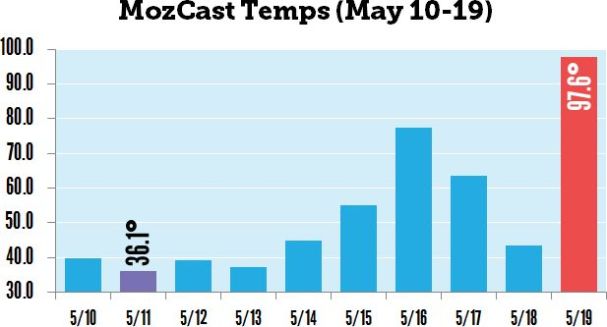 Late September, Google announced an entirely new algorithm release called Hummingbird. Below are 4 things to know along with links to a couple of early blog posts about the announcement.
Late September, Google announced an entirely new algorithm release called Hummingbird. Below are 4 things to know along with links to a couple of early blog posts about the announcement.
1) Content + Assortment Wins.
In light of Hummingbird, it is critical now for eCommerce players to dominate their categories with assortment, and relevant content about that assortment within a given category. The content and assortment organized in ways that make sense to consumers signals to Google that Website A is a better overall category destination than Website B.
2) “Conversational Search” Favors Long-Tail – Especially on Mobile.
Hummingbird’s emphasis on contextual search over keyword search means that players who cover the category with assortment and comprehensive content will win the majority of long-tail queries. A purely head-term strategy will fall short in light of Google’s emphasis on “conversational search” queries – especially on Mobile. Deeper content that maps to more nuanced searcher intent will be increasingly rewarded in search results.
3) Back-to-Basics Strategy Still Wins.
So – does Hummingbird signal a big change in how SEOs strategize to win traffic? Or would a back-to-basics strategy be more effective? The formula for SEO success remains the same – but with a few refinements. To win, SEOs need:
- Clear landing pages –
- Linked to with compelling content –
- Shared through social influencers and advocates.
The goal now (as before) is to provide full coverage across the category to signal to Google that your site is the best destination for consumers within your competitive market space. You can do this with assortment and targeted category landing pages, combined with top-notch sharable content.
An effective content strategy, then, should directly speak to the assortment choices in ways that create value for consumers (think buying guides, how to guides, and product comparison content for research-stage consumers). Also, that content can be more nuanced than before as Google uses contextual search technology to understand true user intent and return content that matches that intent.
4) Mobile – “Conversational Search” allows Google to Compete with Apple’s Siri.
Mobile continues to displace Desktop, and Hummingbird is specifically designed for conversational search via phone (to compete with Siri). So accessibility from anywhere, and from any device increases in importance. Mobile and Tablet search will continue to displace Desktop search as voice-based contextual search technologies continue to improve the mobile search experience for consumers.
Sources & Notes:
http://socialmediatoday.com/sam-lowe/1791111/google-s-hummingbird-update-what-you-need-know
- Contextual search – conversational – for mobile – competes against Siri
Excerpt from Post:
Google is now looking at how you search instead of just what you’re looking for and this is especially true for complex search queries.
Overall, Hummingbird appears to be putting less emphasis on keywords and more emphasis on the context of your search.
Since Hummingbird strives to provide a more natural search environment, content on the internet that is more in-depth and naturally worded appears to have an edge over keyword-rich lines of text written solely for search engines in mind. Sites with well-written, high quality content and pages grouped together which are relevant will rank even higher than before with the introduction of Hummingbird.
It’s hard to dismiss the fact that Google showed off and announced Hummingbird on their blog by using mock-ups on mobile devices…not on a desktop or laptop screen. The internet is accessed via mobile devices by users more than ever; that trend doesn’t seem to be diminishing anytime soon and Google is keenly aware of this. The search engine giant wants it to be easier than ever to pull out your phone and find exactly what you’re looking for on the internet.
http://www.rimmkaufman.com/content/Not-Provided_Blueprint-article-final.pdf
- Google looks at how users refine search results to get the content they actually intend to find. These insights may play a role in Hummingbird’s ability to offer intent-based search results rather than keyword-based search results.
Excerpt from post:
Once a searcher types a query into the search box of a major search engine such as Google or Bing, the search engine logs related activity, which could include:
• What pages appeared in search results (and at which ranking positions)
• The result the searcher clicked on (if any)
• If and how the searcher refined the result (if the searcher didn’t click a result)
• If the searcher returned to the search results and clicked on a different result after clicking (and what that next click was)
• What query the searcher typed next
http://searchengineland.com/google-hummingbird-172816
- Conversational search (via phone / voice command) replaces shorter head-term queries as more users adopt mobile.
- Optimizing for conversational search will deliver greater benefit – both in head-terms as well as in head-term queries as Google connects the dots and synthesizes the true intent of shorter head-term queries.
- One impact of this: item pages and deep-long tail content may continue to surface is SERPS and replace top-level head-term pages (think product pages winning over category pages, and deep articles winning over blog home-pages.
Excerpt from Post:
What type of “new” search activity does Hummingbird help?
“Conversational search” is one of the biggest examples Google gave. People, when speaking searches, may find it more useful to have a conversation.
“What’s the closest place to buy the iPhone 5s to my home?” A traditional search engine might focus on finding matches for words — finding a page that says “buy” and “iPhone 5s,” for example.
Hummingbird should better focus on the meaning behind the words. It may better understand the actual location of your home, if you’ve shared that with Google. It might understand that “place” means you want a brick-and-mortar store. It might get that “iPhone 5s” is a particular type of electronic device carried by certain stores. Knowing all these meanings may help Google go beyond just finding pages with matching words.
In particular, Google said that Hummingbird is paying more attention to each word in a query, ensuring that the whole query — the whole sentence or conversation or meaning — is taken into account, rather than particular words. The goal is that pages matching the meaning do better, rather than pages matching just a few words.
I thought Google did this conversational search stuff already!
It does (see Google’s Impressive “Conversational Search” Goes Live On Chrome), but it had only been doing it really within its Knowledge Graph answers. Hummingbird is designed to apply the meaning technology to billions of pages from across the web, in addition to Knowledge Graph facts, which may bring back better results.”











You must be logged in to post a comment.